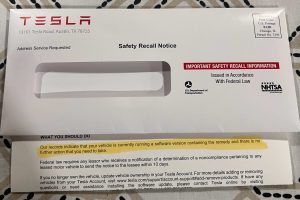Key Takeaways
- Tesla reported delivering 336,681 vehicles globally in Q1 2025.
- Deliveries were lower than analysts’ expectations of between 377,592 and 407,900 vehicles.
- Tesla produced 362,615 vehicles during the first quarter, slightly more than delivered.
- Most of the deliveries and production consisted of Model 3 and Model Y vehicles.
- Production was affected by a changeover of Model Y lines across multiple Gigafactories.
- Despite missing analyst expectations, Tesla’s stock was only slightly down by 1.87%.
In the dynamic world of automotive innovation, Tesla continues to be a bellwether, shaping the future of electric vehicles (EVs) with its bold ambitions and groundbreaking technologies. Tesla recently released its vehicle delivery and production report for the first quarter of 2025, shedding light on how the company is performing against the backdrop of high market expectations and operational challenges.
The Numbers Behind Q1 2025
Tesla’s Q1 2025 statistics reveal an impressive global delivery of 336,681 vehicles. However, this figure fell short of analyst forecasts, which ranged from 377,592 to 407,900 vehicle deliveries. The production side was slightly better, with Tesla churning out 362,615 vehicles, indicating an overproduction of nearly 26,000 vehicles compared to deliveries.

Vehicle Breakdown
The bulk of Tesla’s achievements this quarter was centered around its popular Model 3 and Model Y vehicles, which comprised the majority of both production and delivery numbers. This reflects Tesla’s strategic focus on scaling its more affordable and in-demand models to maximize market penetration globally.
Understanding the Shortfall: Key Factors
There are several potential factors contributing to the delivery shortfall observed in Tesla’s Q1 results:
- Production Changes: Notably, the changeover of Model Y production lines at various Gigafactories including Texas, Fremont, Shanghai, and Berlin, resulted in a temporary loss of production capacity. As these facilities underwent optimization upgrades, production delays were an inevitable trade-off.
- Global Logistics and Supply Chain Challenges: Like many other industries, Tesla faces ongoing challenges related to global supply chain issues, which may have impacted the timely delivery of vehicles.
- Demand Predictions and Market Variability: While demand for Tesla vehicles remains robust, accurately forecasting consumer preferences and reacting to market shifts is a complex task that can sometimes lead to discrepancies in delivery targets.
Market Reaction: A Measured Response
Investors have shown a surprisingly tempered response to the slight deviation from expected delivery figures. TSLA shares only fell by 1.87%, indicating investor confidence in Tesla’s long-term strategic execution and its ability to overcome short-term hurdles.
Key Takeaways for Stakeholders
- Adapting to Change: Tesla’s proactive approach to upgrading its production facilities, while temporarily painful, is a long-term strategic investment aimed at increasing future throughput and enhancing production efficiencies.
- Investor Confidence: The modest dip in stock value suggests that investors remain optimistic about Tesla’s growth trajectory and innovative pipeline.
- Continued Market Leadership: Despite production and delivery challenges, Tesla continues to be a pioneering force in EVs, driving industry standards and consumer expectations.
Looking Ahead
As Tesla continues to refine its operational strategies and address logistical bottlenecks, the future remains promising for the company and its stakeholders. With industry-leading models and a commitment to innovation, Tesla is poised to continue its leadership in the electric vehicle market, setting the stage for what could be a triumphant year.





